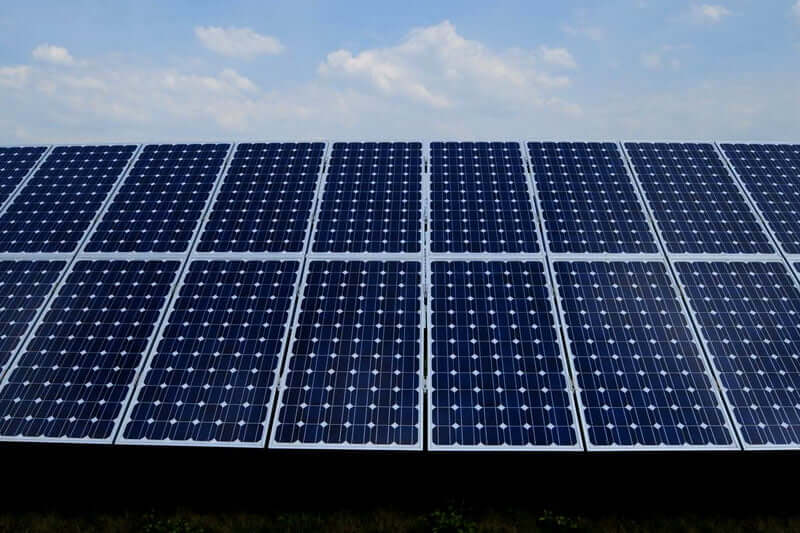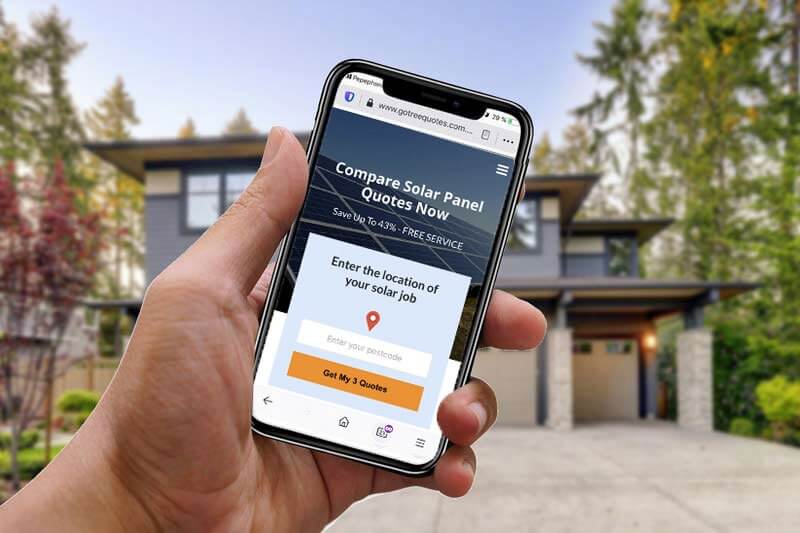Home Is a Solar Cell and a Photovoltaic Cell the Same?
Is a Solar Cell and a Photovoltaic Cell the Same?
In the realm of solar technology, two terms regularly tossed around as if they’re interchangeable are solar cell and photovoltaic cell. But are they truly one and the same? Let’s take a closer look and find out.
A photovoltaic cell contains layers of semiconductors that convert the sun’s light into electric energy. The conversion process is known as the solar voltaic effect. A solar cell absorbs the sunlight and converts it into heat. Thus, a solar cell is a photovoltaic cell.
Several photovoltaic cells work together in a solar panel to ensure that it absorbs as much sun as is available and convert it into electricity effectively and efficiently.
Table of Contents
ToggleWhat Is A Photovoltaic Cell?
It is an electrical component that converts solar energy to electrical energy. It is commonly used in the manufacture of solar panels. It is also called a solar cell.
It looks like a sandwich as it is composed of several layers of materials. Each material in the cells has its function. Together, the materials allow for the efficient conversion of sunlight into electricity.
The semiconductor layer is the most important as it converts sunlight to electricity. One part of the layer is treated while the other is not to allow for maximum absorption and conversion of sunlight to electricity.

How does a photovoltaic cell function?
A photovoltaic cell functions effectively in an electric field brought about by exposure to the sun.
The top layer is negatively charged while the lower layer is positive. Once sunlight hits the cell, the negative layer electrons get charged then the positive layer also gets charged allowing for the movement of electricity.
A solar panel will have several cells within it. The charge in the cells is then harnessed and directed to the other components of the solar panels to produce safe and renewable electric power.
A unique feature of photovoltaic cells in electricity production is the lack of moving parts. Only the sunlight photons and the electrons in the cell move. It makes the PV cell efficient and cost-effective since it does not require regular maintenance. It also ensures that they last a long time.
Solar panels have a productive lifespan of 25 years thanks to photovoltaic cell technology.
Types of photovoltaic cells
The most common material for solar panel and photovoltaic cell manufacturing is silicon. It is a high-grade electricity conductor.
There are three major types of photovoltaic cells.
Monocrystalline silicon
Made from monocrystalline silicon. It is an extremely pure form of silicon. It makes these cells labor-intensive to manufacture and expensive. However, they are superior electricity conductors.
Polycrystalline silicon
These photovoltaic cells contain many small grains of crystals rather than a single one. It is cheaper to produce, hence it is the most commonly found cell in solar panels around the world.
Thin-film photovoltaic cells
It is a unique technology that utilizes thin layers of silicon onto a glass substrate. Thin-film photovoltaic cells are less efficient than crystalline cells. Their efficiency in electricity production also reduces drastically in the first few months of use. Therefore, they are not popular even with their low production costs.
Third Generation Photovoltaic Cells
These photovoltaic cells are made through the combination of crystalline silicon and thin-film technology. The third-generation photovoltaic cells are highly efficient and cost-effective in the manufacture of solar panels.
Advantages and disadvantages of photovoltaic cell
Advantages
- Efficiency. It converts the little sunlight available into electricity. As a result, you can get some power from your solar panels even on a cloudy day.
- Cost-effective. It does not require maintenance for its entire lifetime.
- Affordable. The low cost of production has ensured that solar panels are widely available at a low price.
- Eco-friendly. Helps to eliminate reliance on fossil fuels in electricity production. Hence, it lowers carbon production making it more environmentally friendly.
- Long life-span. The crystalline photovoltaic cells are durable and long-lasting. It ensures that you can save money once you install solar panels.
Disadvantages
- You cannot use it on its own. Solar panels require hundreds of photovoltaic cells to produce sufficient household electricity.
- Cannot be used directly. It can only be used in solar panels. You cannot remove a photovoltaic cell from a solar panel and expect that it will work on its own.
How solar cells or photovoltaic cells are made
There are seven stages in the making of photovoltaic cells.
Stage 1. Silicon purification
Purified silicon is achieved through the extraction of oxygen from silicon dioxide.
The extraction process involves placing the silicon dioxide in an electric arc furnace while applying a carbon arc. It results in molten silicon and carbon dioxide that is 99% pure.
The remaining 1% of impurities are removed by passing the silicon rods over a heated zone. This purification method is known as a floating technique.
It results in the impurities moving to one end of the rod. That end is then cut off, leaving pure silicon.
Stage 2. Creation of single crystal silicon
A seed crystal of silicon is placed in melted polycrystalline silicon. Rotating it in the melted silicon as it is being removed turns it into single crystal silicon.
Stage 3. Make the silicon wafers
The single-crystal silicon boule made from the preceding stage is cut into layers with a circular diamond saw. The layers can then be cut into squares and used for the making of solar panels. The thin layers of the silicon wafers ensure that the solar panel is not bulky and that it works efficiently.
Stage 4. Doping
In this stage, impurities are added to the silicon. Impurities can be added by adding boron while cutting the wafers. You can also use a particle acceleration method to add phosphorous into the silicon.
Stage 5. Adding electrical contacts
Electrical contacts connect solar cells in the solar panel. They also receive and transmit the current produced by the photovoltaic cells.
The electrical contacts are made from copper or palladium. They should be thin enough to let sunshine through the cell easily.
Stage 6. Add anti-reflect coating
Silicon is shiny. Therefore, it can reflect much of the sun that hits it. Hence, the need for an anti-reflect coating.
Solar panels need to absorb as much light as they can. Silicon is a major component of solar cells. Thus, the anti-reflect coating ensures that it can absorb more light than it reflects away.
Stage 7. Cell encapsulation
Cell encapsulation is done to protect the photovoltaic cell. It is encapsulated in silicon rubber and glass.
Solar panels
Solar panels consist of multiple photovoltaic cells. As a result, solar panels are also known as solar or PV panels.
The number of PV cells in a solar panel determines its size or wattage. The more PV cells in a panel the more power it can generate.
Usually, a single solar panel does not produce sufficient power for a household. Consequently, solar panels are sold in arrays to provide enough power to run a home.
For the solar panels to convert sunlight into electricity, other components make up the solar panel system.

How do solar panels work?
Solar panels are usually installed on roofs. The roof enhances access to as much sunlight as possible.
The angle of solar panel installation determines how much sunlight will hit the panels throughout the day. Consequently, it determines the amount of electricity the solar panel system will produce.
Here is how the panels work:
- Solar panels consist of several photovoltaic cells. These PV cells are sandwiched between a top glass pane and a dark shaded pane underneath. These panes protect the PV cells and help in maximum absorption of available sunlight.
- Once the sunlight hits the PV cells, they convert it into electricity which is then transmitted through the wires.
- The kind of electricity coming from the solar panels is known as Direct Current. However, households use Alternating Current electricity.
- The solar inverter, a component of the solar panel system, converts the DC into usable AC power. It is then passed through the electrical wiring of the house and to the appliances that need electricity.
With a solar panel system, you can have as much electricity as you need. You only have to install solar panels that will produce sufficient power for your home.
When installing solar panels, you must hire a professional to do it correctly.
Benefits of solar panel installation
- Saves you money on your electricity bills.’
- Does not require maintenance.
- Long lifespan. You do not have to keep replacing solar panels or components.
- Quick return on investment
- Environmentally friendly. Depends on renewable sunlight rather than fossil fuels.
- Energy independence. You can avoid power blackouts or live far away from the grid with solar power.
Are you looking for a reliable solar technician?
Instead of going through all the hassle of looking for reliable solar technicians in your area, we can make the process easier for you.
Use this FREE service
Gosolarquaotes.com.au is a FREE Service that connects homeowners to solar installers easily. All you need to do is:
- Enter your zip code in the space provided at the top.
- On the next page, fill out the form to offer more details on your solar project. Click Submit.
- You will receive three or more quotes and advice from professional installers.
- Hire one of the professionals to remove and reinstall your solar panels.

How efficient are solar panels?
Solar panels are only 15%-20% efficient. Solar panel efficiency refers to their ability to convert to electricity the sunlight that hits them.
Therefore, many installed solar panels only convert 15%-20% of the sunlight they receive to electricity.
To many, this is considered low efficiency. However, solar panel engineers are working to improve the efficiency of the solar panels of the future.
Factors that influence the efficiency of solar panels
These include:
Solar panel design
PV cells in solar panels are designed to be most efficient when there is maximum sunlight. Hence, solar panels are only highly efficient between mid-morning and early afternoon when there’s plenty of sunlight.
Solar panel installation
Tilt and angle of installation determine how much sunlight reaches the solar panels. At the correct angles, solar panels will be more efficient.
Age of the solar panels
The older the solar panels on your home, the less efficient they are. Solar panels lose 20% of the efficiency of their photovoltaic cells in the first ten years. The remaining 80% is lost over the remaining 15 years of its lifespan.
Location
Different locations receive varying sunlight. Solar panels are more efficient in locations with more hours of sunlight.
Regular cleaning
Solar panels may accumulate dust and other items dumped by the wind on them. They will reduce the amount of light getting to the photovoltaic cells in the panel and its efficiency. Clean your solar panels annually to enhance their efficiency.
Battery storage
You can enhance the efficiency of your solar panels by storing the energy produced in batteries. Solar batteries provide the capacity to use solar without sunlight.
Disadvantages of solar panels
- Cost. The initial cost of acquisition and installation is high. However, over the last decade, the price of solar panel installation has come down significantly.
- Depends on the sunlight. Without sunlight, you cannot use solar power. If you live in a region with little sunshine, your solar panels will be inefficient.
- Associated with pollution. The mining and production of silicon, which is a large component of PV cells in the solar panel, pollutes the environment. Solar panel disposal also causes pollution.
Table of Contents
Toggle




